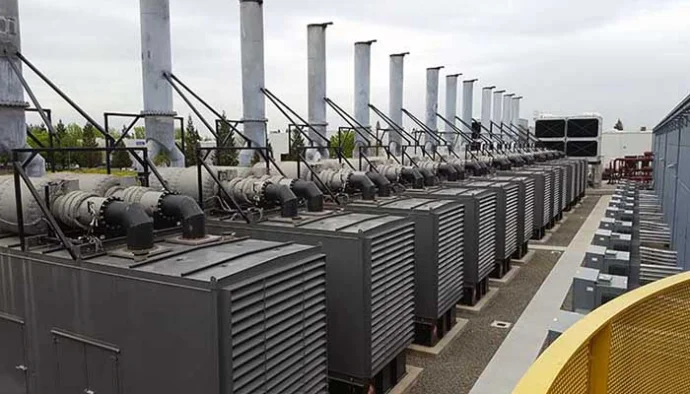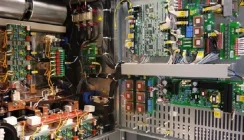The Key Differences Between UPS, Generators and Energy Storage
There is often confusion as to the roles played by UPS systems and generators in critical power protection plans. This is more so now that lithium-ion batteries are also turning uninterruptible power supplies into what are now termed as energy storage systems. What’s the key differences between a UPS and generator?
Uninterruptible Power Backup
Uninterruptible power supplies have two roles. There are three types of UPS system including on-line, line interactive and off-line or standby.
Line interactive and off-line systems essentially provide battery backup when the mains power supply fails or fluctuates outside of pre-set limits. The UPS may include some form of spike and electrical noise filtering and the line interactive UPS will include some form of automatic voltage stabilisation. The voltage stabiliser element may be electronic or a tap-changing transformer and helps to provide protection from brownouts, sags and surges in the mains power supply.
An on-line UPS has a constantly running inverter and this supplies a digitally generated AC (alternating current) waveform within tight tolerances and often superior to that of the mains power supply. The UPS also provides battery backup when the mains power supply fails, and the battery pack can be sized for longer runtimes up to several hours.
On-line UPS also feature an automatic bypass arrangement. Built-into the UPS system, a circuit monitors the inverter output waveform. Any collapse of the voltage or current waveforms, caused by an overload or fault condition, can trigger the bypass to transfer the load to the bypass mains power supply. An on-line UPS system can therefore fail safely to mains.
On-site Power Generation
Generators provide power via a motor or engine that is fuelled from either petrol (small/portable sets), diesel or liquid petroleum gas (LPG) which is stored within a bunded tank within the generator set or a storage tank nearby.
Generators can be sized to provide Prime Power or Standby Power. Prime power generators run continuously to power their loads. Standby power generators provide temporary backup power when called up to do so i.e. during a mains power supply failure.
There are many different types of generators available depending on the application. Portable generators are designed for redeployment and can be used to for a range of remote type applications including domestic and camping, to supply roadside works and lighting towers. Fixed installation generators are more commonly used within datacentre and server room backup power installations.
UPS System and Backup Generator Installations
This type of power protection scenario requires the installation of both a standby power generator and uninterruptible power supply or set of UPS systems to protect the critical load. The UPS system must be sized to power both the UPS installation and any other essential services including lighting and air conditioning.
The sizing factor depends on the age of the generator, and principally its type of alternator and the age of the UPS system. Older installation may require a factor of two to three times i.e. a 100kVA supported by a 250kVA generator but more modern systems can be sized more closely, and a common generator sizing factor today is 1.25 to 1.5 times.
So why have a UPS system and a generator? The reason lies in the start-up time for the standby power generator. When a generator is not powering its connected loads, the only part that is live is the monitoring and starter circuit. The actual installation includes an AMF (automatic mains failure) panel which monitors the local mains power supply and signals the generator to start-up when the primary power source fails.
A generator can take several seconds to start and relies on its starter-battery being in a charged state. The installation should also be secure in terms of no circuit breakers left open following a maintenance inspection and the fuel supply should be clear of any pollutants and air bubbles. These are common ‘no-go’ issues when a generator is called upon to start-up immediately.
Once started the generator can take several cycles (motor revolutions) before it is ready to provide a stable source of AC power to the UPS system input. During the generator start-up period, the UPS system uses its battery set to power the load. When the generator supply is stable, the uninterruptible power supplies uses the generated power source for the connected loads and starts to recharge its battery.
Most self-contained generators are supplied with an internal bunded fuel tank or day tank, designed to run for around 8 working hours. This means that the UPS battery can be sized to cover a short runtime of 10-30 minutes. If the generator starts then this battery only needs to be sized for 1-2 minutes but if there is a problem, enough time on battery should be allowed for to investigate any issues with the generator. This time will quickly elapse if there is a problem however and will be insufficient should the local server room or datacentre need to be powered down. This can last several hours. It is vital therefore to ensure that the generator is well maintained via preventative maintenance visits and regularly started i.e. once a month. It is also important to ‘black start’ the entire generator and UPS installation on at least an annual basis, using the servers as load or if this is considered too risk using load banks.
Energy Storage Systems and Generators
Energy storage are designed to provide battery backup in the same way as UPS systems but on a faster cyclic basis. A UPS system typically uses a lead acid battery set. Lead acid battery technology is perfectly suited to standby power protection where there is a long period between intermittent power outages.
Energy storage systems use higher power density lithium-ion batteries which are more suited to more frequent and rapid charge/discharge cycles. This feature allows an energy storage system to store power generated from local renewable power sources i.e. wind turbines and solar PV installations as well as from the electricity grid. When required the connected loads or local site can be powered from the lithium-ion battery set i.e. overnight when there may be less solar PV available or during less windy days where the local wind turbine farm cannot provide enough power. Energy can be stored from the mains power supply overnight during off-peak rates and used during peak time rate periods to reduce overall costs. Generators can also be used with energy storage systems to provide another source of standby power as backup to the grid or renewable power sources.
UPS systems can be converted into energy storage systems. For this type of application, the traditional lead acid battery set is replaced with a lithium-ion battery set with a separate battery management system. The battery management system itself is more complex to ensure balanced charging across the lithium battery set and provide additional safety cut-outs in the event of thermal runaway.
Summary
As more server rooms and datacentre operators move towards lithium-ion battery based uninterruptible power supplies their usage as energy storage systems will increase. For those installations with a local standby power generator and electricity from renewable power sources, the option to be totally ‘grid independent’ is one that could be attractive. In this case the installation can use the mains power supply as a back-up rather than primary power source and benefit from feed-in-tariffs from exporting excess power to the grid or demand side response (DSR) programmes from the National Grid which aim to balance out peak-demand by paying large electricity users to reduce their load on the grid or run independently.


























